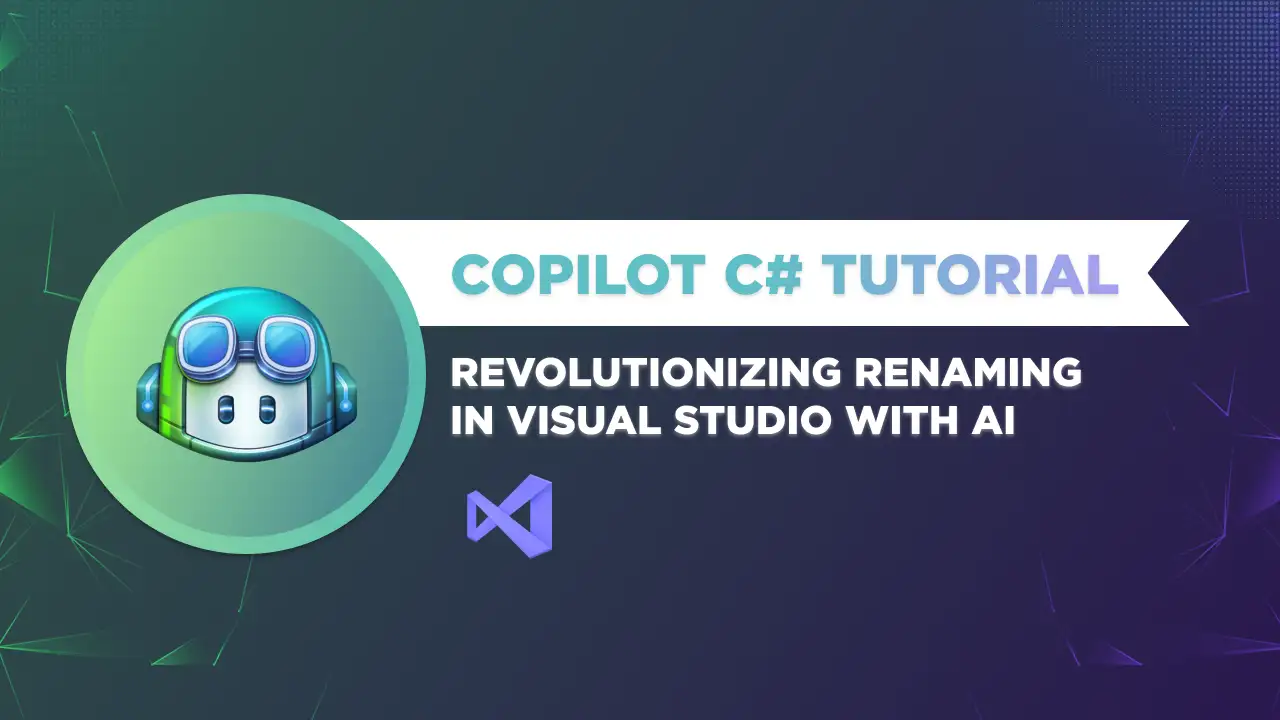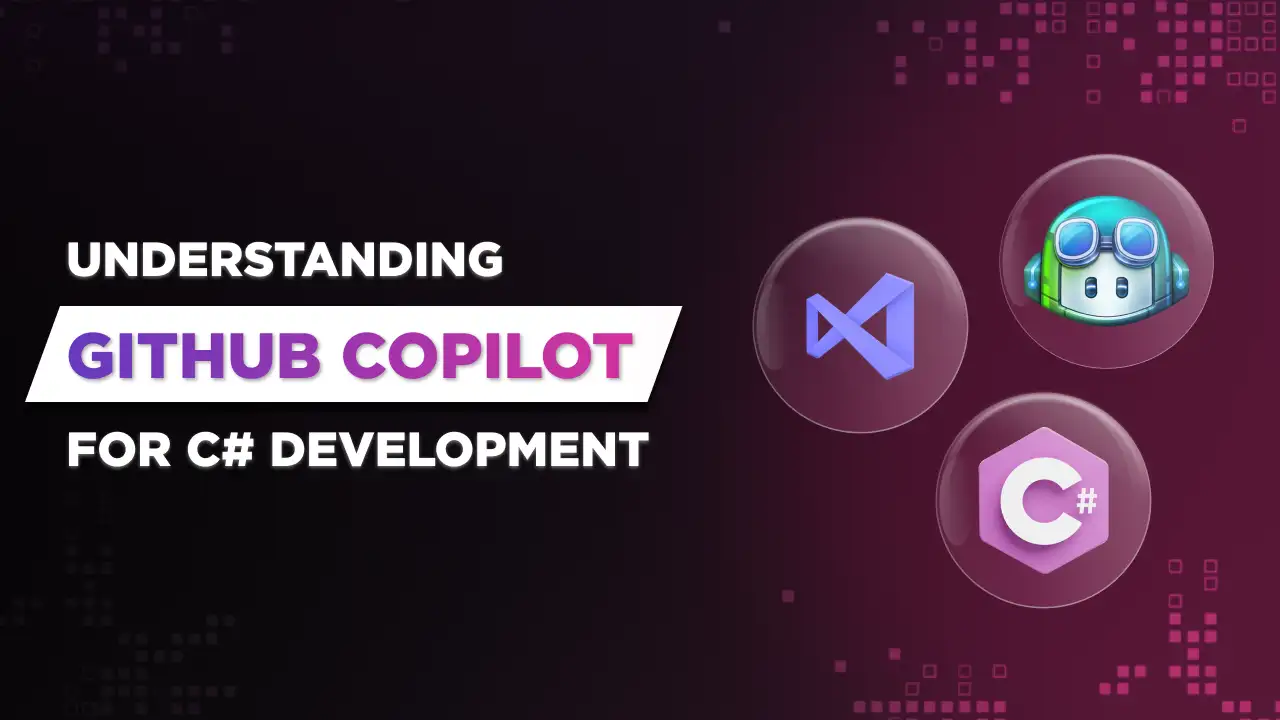Understanding GitHub Copilot for C# Development
In this article, we will explore Tim Corey’s insights on GitHub Copilot, a new AI-powered tool for developers. Tim in his video on "First Look at GitHub Copilot and What It Means For Developers" addresses common concerns and provides a balanced view of the pros and cons of this technology. Let's dive into his analysis and understand what GitHub Copilot means for developers but let's first have a look at the introduction of Copilot.
Introduction to GitHub Copilot
GitHub Copilot, an AI-powered code completion tool developed by GitHub and OpenAI, revolutionizes the coding experience by providing intelligent code suggestions and automating repetitive tasks. GitHub Copilot leverages extensive training data from public GitHub repositories to generate accurate and relevant code completions, enhancing productivity and enabling developers to focus on more complex aspects of their projects.
Whether you're working on software development, fixing bugs, or exploring new coding concepts, GitHub Copilot's real-time suggestions and inline chat feature make the development process smoother and more intuitive. With a subscription to GitHub Copilot, developers can unlock the full potential of this innovative tool, transforming their coding workflow and elevating their software development lifecycle.
Access GitHub Copilot Extension
The GitHub Copilot extension is a powerful tool that integrates seamlessly into Visual Studio and Visual Studio Code, enabling developers to enhance their coding experience significantly. To begin using the GitHub Copilot, you need to install it from the Visual Studio marketplace. Once installed, the Copilot extension creates and utilizes GitHub Copilot's AI model to provide context-aware code suggestions as you type, making coding faster and more efficient.
To use GitHub Copilot, you need an active GitHub Copilot subscription. After subscribing, you can access the full capabilities of Copilot, including GitHub Copilot chat, which allows you to interact with the AI to get more precise code suggestions and explanations. This chat feature is especially useful for understanding complex code snippets and learning new coding techniques. Additionally, you can customize GitHub Copilot to better suit your development needs and preferences, ensuring that the code suggestions align with your coding style and project requirements.
As you write code, GitHub Copilot generates suggestions and integrates them seamlessly into your development workflow. The GitHub blog highlights that GitHub Copilot enables developers to both write code faster and better code by offering intelligent code completions and helping with repetitive coding tasks. Whether you are working on a small project or part of a larger Copilot enterprise, GitHub Copilot's AI-driven assistance ensures that you stay productive and focused on the more critical aspects of software development.
Understanding GitHub Copilot from Tim's Perspective
Tim Corey begins by introducing GitHub Copilot, an AI pair programmer designed to assist developers by suggesting code snippets and completing code based on patterns it has learned from public repositories. Tim emphasizes that while this tool promises to be a significant aid, it is crucial to differentiate between marketing hype and reality.
By accessing the GitHub Copilot extension, developers can transform their coding practices, making the most of the source code and code suggestions provided by the AI to generate code that is efficient and time-saving.
Artificial Intelligence vs. Machine Learning
Tim clarifies that GitHub Copilot is not true artificial intelligence. Instead, it falls under the category of machine learning. He explains, "Artificial intelligence is about making decisions and choices, whereas machine learning is about identifying patterns and suggesting actions based on those patterns." Tim underscores the importance of understanding this distinction to set realistic expectations about what the tool can and cannot do.
How GitHub Copilot Works
Using an example, Tim explains how GitHub Copilot suggests code based on comments and partially written code. He demonstrates a scenario where the tool generates code for sentiment analysis, showcasing its ability to provide helpful suggestions that save time and effort. However, he cautions that developers must still understand the code it produces. As Tim says, "It's giving you someone else's code, and you need to know what it's doing."
The Benefits of GitHub Copilot
One of the key benefits highlighted by Tim is that GitHub Copilot helps developers avoid reinventing the wheel. By leveraging existing code patterns, developers can focus on higher-level problem-solving rather than writing boilerplate code. Tim elaborates, "As developers, we shouldn't be reinventing the wheel. If someone has done it well once, why should we do it again?"
The Limitations of GitHub Copilot
Despite its benefits, GitHub Copilot is not a silver bullet. Tim warns that it is not a code generator that can handle completely novel problems. Instead, it excels at suggesting solutions to common coding challenges. "It's not going to write methods for you out of thin air," Tim explains. "It's looking at what's already been done and suggesting those patterns."
Practical Considerations
Tim shares practical considerations for using GitHub Copilot. He emphasizes that while the tool can be a great aid, it is essential for developers to understand the code it generates. Blindly copying code without comprehension can lead to problems down the line when the code needs to be debugged or modified. "You need to understand the code that it writes," Tim stresses. "If it breaks, and you don't know what it does, you're in trouble."
Implications for Coding Interviews
Tim discusses how GitHub Copilot might affect coding interviews. He mentions an internal test where GitHub Copilot completed a coding assessment in minutes. This raises questions about the validity of traditional coding tests. However, Tim argues that understanding the underlying logic of code remains crucial, and coding interviews should still evaluate a developer’s comprehension and problem-solving skills. "Even if GitHub Copilot can ace a coding test, that doesn't mean the developer understands the code," Tim points out.
Evaluating Quotes and Assumptions
Tim reviews quotes from various sources, highlighting common assumptions about AI-powered coding tools. He agrees that GitHub Copilot can assist with syntax and language-specific quirks but stresses that true understanding of the code's logic is indispensable. Developers should not rely solely on Copilot without grasping the principles behind the code. "Trying to code in an unfamiliar language by Googling everything is like navigating a foreign country with just a phrase book," Tim says. "Using GitHub Copilot is like hiring an interpreter."
The Risk for Junior Developers
Tim emphasizes a significant risk for junior developers using GitHub Copilot: misunderstanding their own code. He presents a scenario where a junior developer uses Copilot to generate a regular expression for email validation. While the generated code may pass initial tests and work in production, the developer might not truly understand its functionality or potential flaws. This lack of understanding can lead to dangerous oversights, especially in fast-paced environments where developers quickly move from one project to the next.
The Balance of Benefits and Drawbacks
Tim acknowledges the positive aspects of GitHub Copilot, such as its ability to teach nuances in languages like JavaScript. He appreciates that Copilot can introduce developers to new techniques and patterns they might not be familiar with. However, he stresses the importance of developers understanding and learning from the suggestions rather than blindly accepting them.
Enhancing Unit Testing
Tim highlights a particularly exciting feature of Copilot: its ability to assist in unit testing. He shares an example where Copilot detected a missing test and suggested writing it. This capability can help developers catch edge cases and potential bugs, thereby improving code quality. Tim is enthusiastic about Copilot acting as a pair programmer, pointing out blind spots and enhancing the robustness of tests.
Understanding and Improving Code Quality
Tim discusses GitHub Copilot's performance based on benchmark tests with Python functions. The model correctly filled in function bodies 43% of the time on the first try and 57% with ten attempts. Tim emphasizes the importance of developers understanding the generated code, as Copilot's suggestions can be wrong a significant portion of the time.
The Evolution of Development Tools
Tim reflects on the evolution of development tools, comparing Copilot to previous advancements like IntelliCode and early plugins that brought in code snippets from sources like Stack Overflow. He argues that each step in this evolution builds on the work of previous developers, making development more efficient without replacing the need for human oversight and understanding.
The Role of Developers
Tim addresses concerns about AI replacing developers. He asserts that tools like Copilot will not make developers redundant. Instead, these tools assist with syntax and micro logic, while developers remain responsible for the overall logic and structure of their applications. He likens this to using pre-built libraries and frameworks, which streamline development without eliminating the need for skilled developers.
Conclusion
GitHub Copilot represents a significant step forward in AI-assisted coding, offering numerous benefits for C# developers. However, it's crucial to use this tool wisely, as Tim Corey advises in his video, to ensure it enhances rather than diminishes your coding skills. For more insights and hands-on learning material, please visit Tim Corey's YouTube Channel.














